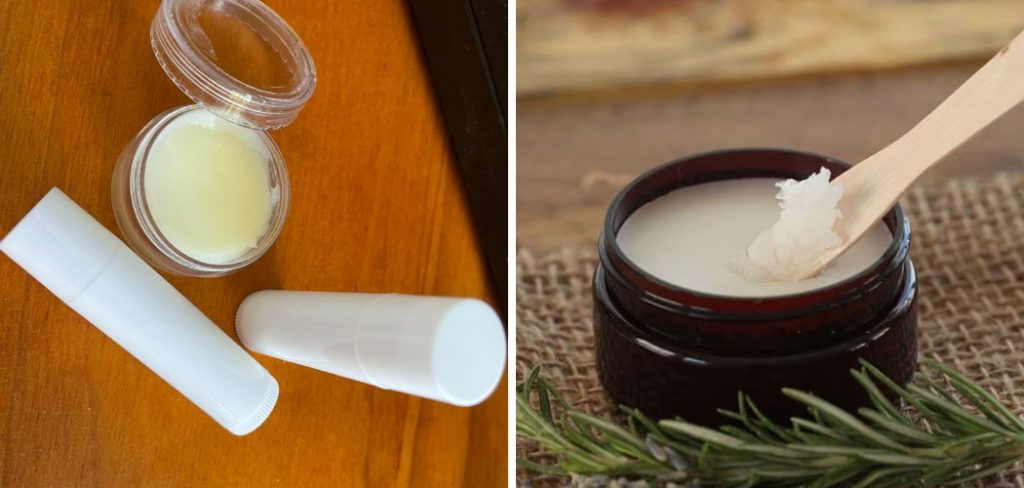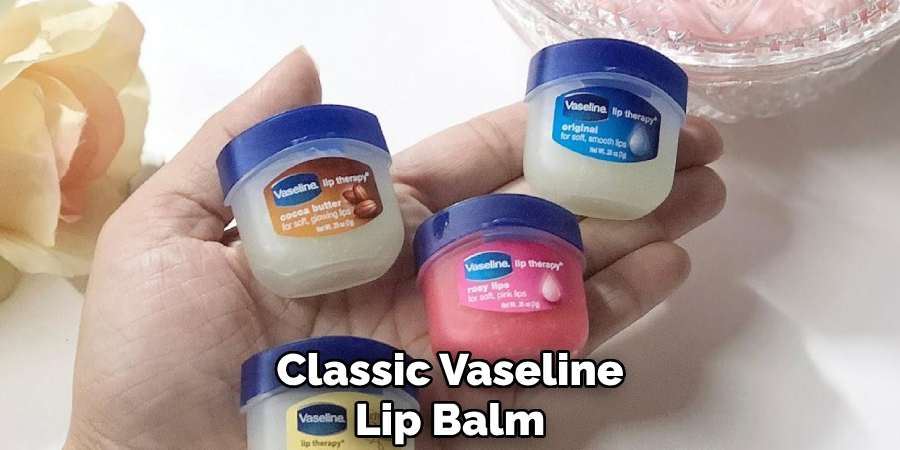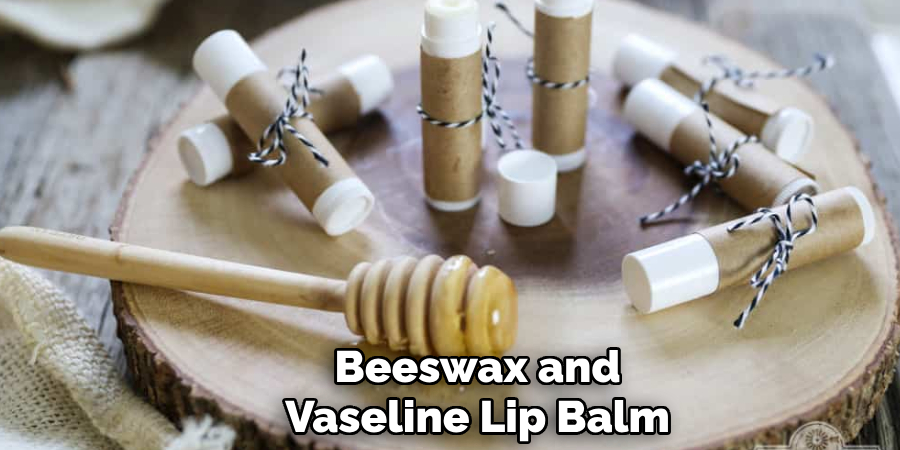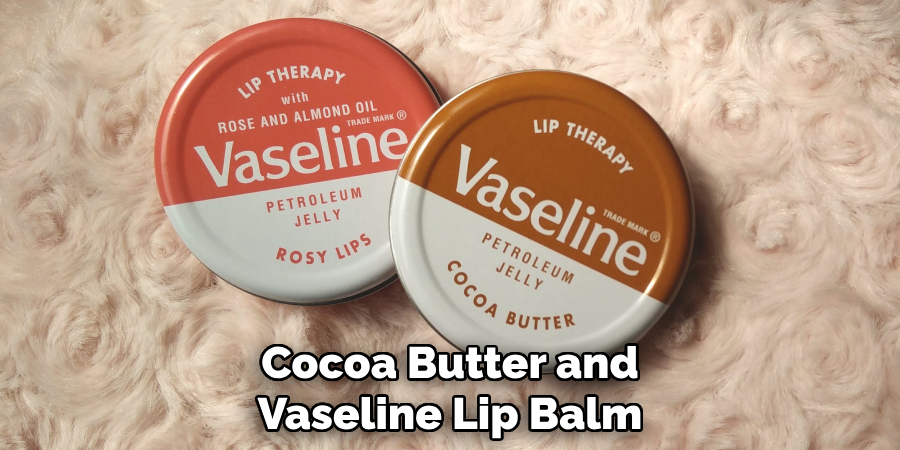Making your own lip balm at home is a simple and cost-effective way to keep your lips soft and hydrated. With just a few basic ingredients, including Vaseline as the base, you can create a nourishing and customizable product.

This guide will walk you through the easy steps of how to make lip balm with vaseline, perfect for personal use or as a thoughtful handmade gift.
Why Homemade Lip Balm is a Great Option
Homemade lip balm offers numerous advantages over store-bought alternatives. First, it allows you to take full control of the ingredients, ensuring that your product is free from harsh chemicals, artificial fragrances, and allergens. This makes it a safer and more natural choice for those with sensitive skin. Additionally, DIY lip balm is highly customizable—you can experiment with different scents, flavors, and even add ingredients like essential oils or natural coloring for a personal touch.
Making your own also reduces packaging waste, making it an eco-friendly alternative. Finally, crafting homemade lip balm can be cost-effective and turn into a fun, creative activity that leaves you with a useful and nourishing product.
Ingredients and Supplies Needed
To make your own lip balm with Vaseline, you will need a few simple ingredients and tools that are easy to find. Here’s what you’ll need:
Ingredients:
- Vaseline (Petroleum Jelly): Acts as the base of your lip balm, providing moisture and a smooth texture.
- Beeswax or Coconut Oil (optional): Adds firmness to the balm and enhances nourishment.
- Essential Oils (optional): For fragrance and added benefits; popular choices include peppermint, lavender, or vanilla.
- Natural Coloring (optional): Such as beetroot powder or cocoa powder for a subtle tint.
- Honey (optional): Provides extra hydration and a touch of sweetness.
Supplies:
- Microwave-Safe Bowl or Double Boiler: For melting and mixing the ingredients.
- Mixing Spoon or Stirrer: To thoroughly combine the ingredients.
- Lip Balm Containers or Tubes: Ensure they are clean and dry for proper storage. Small tins or empty lipstick tubes work well.
- Measuring Spoons/Scale: For accurate ingredient measurements.
- Dropper or Pipette (optional): Useful for transferring the mixture into containers with precision.
Having all these ingredients and supplies gathered before starting will make the process smooth and efficient.
10 Methods How to Make Lip Balm with Vaseline
1. Classic Vaseline Lip Balm
This is the simplest method to create a lip balm using Vaseline alone. To make it, take a small container and fill it with Vaseline. Use a spoon or spatula to smooth the surface and let it set. Apply directly to the lips whenever needed. This method is perfect for those who want a quick and effective solution for dry lips without any additional ingredients.

2. Honey-Infused Vaseline Lip Balm
Honey is well known for its natural healing and moisturizing properties. To make honey-infused lip balm, mix a teaspoon of Vaseline with half a teaspoon of honey. Heat the mixture for a few seconds in the microwave or on a stovetop, stirring well to blend the ingredients. Once combined, pour the mixture into a small container and allow it to cool before use. This lip balm will provide extra hydration and nourishment.
3. Vitamin E Enriched Lip Balm
Vitamin E is an excellent ingredient for lip care, as it helps repair dry and chapped lips. To create this lip balm, cut open a Vitamin E capsule and mix its contents with a tablespoon of Vaseline. Stir well and store in a small container. Applying this mixture regularly will keep your lips soft and free from cracks.
4. Coconut Oil and Vaseline Lip Balm
Coconut oil is widely known for its moisturizing properties and its ability to enhance skin hydration. To make this lip balm, melt one teaspoon of coconut oil and mix it with a tablespoon of Vaseline. Stir thoroughly and transfer it into a small jar or container. Once cooled, it will solidify into a smooth and nourishing lip balm, perfect for dry and cracked lips.
5. Beeswax and Vaseline Lip Balm
Beeswax helps to give lip balm a firmer texture, making it easier to apply. Melt half a teaspoon of beeswax in a double boiler, then add one tablespoon of Vaseline. Stir continuously until both ingredients are fully combined. Pour the mixture into a small container and let it set. This balm provides a thicker and longer-lasting protective layer for your lips.
6. Essential Oil Infused Lip Balm

Adding essential oils to Vaseline lip balm can provide additional benefits such as soothing and cooling effects. Essential oils like peppermint, lavender, or chamomile can enhance the balm’s effectiveness. To make this, add a few drops of your chosen essential oil to a tablespoon of Vaseline. Mix well and store in a lip balm container. Apply as needed for refreshed and fragrant lips.
7. Shea Butter and Vaseline Lip Balm
Shea butter is rich in vitamins and fatty acids that nourish the skin. To make this lip balm, mix one teaspoon of melted shea butter with a tablespoon of Vaseline. Stir well and transfer it into a small container. Once it cools, the balm will have a creamy texture, offering deep hydration and smoothness for your lips.
8. Tinted Lip Balm with Vaseline
If you prefer a lip balm that provides a touch of color, you can add a small amount of lipstick or food coloring to Vaseline. Melt a small piece of lipstick or mix a drop of food coloring into a tablespoon of Vaseline. Stir until well combined and pour into a small container. This tinted balm will keep your lips hydrated while adding a subtle hue.
9. Cocoa Butter and Vaseline Lip Balm
Cocoa butter is a luxurious moisturizer that helps prevent dry lips. To create this lip balm, melt a teaspoon of cocoa butter and mix it with a tablespoon of Vaseline. Stir well and store in a lip balm container. Once solidified, the balm will provide deep nourishment, making your lips feel soft and smooth.
10. Aloe Vera and Vaseline Lip Balm
Aloe vera is known for its soothing and healing properties, making it an excellent addition to lip balm. To make this balm, mix a teaspoon of aloe vera gel with a tablespoon of Vaseline. Stir thoroughly and store in a small container. This lip balm is especially beneficial for soothing chapped and sunburned lips.

Things to Consider When Making Lip Balm
When crafting your own lip balm, there are several factors to keep in mind to ensure the best results:
- Ingredient Sensitivities: Always consider potential allergies or sensitivities to ingredients like essential oils, beeswax, or coconut oil. Test new ingredients on a small patch of skin before use.
- Consistency Preferences: Adjust the proportions of Vaseline, beeswax, or oils to achieve the desired firmness or texture. A softer balm may be more suitable for colder climates, while firmer balms work well in warmer conditions.
- Hygiene: Ensure all tools, containers, and surfaces are clean and sanitized before starting. This minimizes the risk of contamination and increases the shelf life of your lip balm.
- Storage: Use sturdy, airtight containers to store the balm. Keep them in a cool, dry place to prevent melting or spoilage.
- Customization: Feel free to experiment with colors, fragrances, and additional ingredients, but introduce them gradually to avoid overpowering the balm or affecting its texture.
- Shelf Life: Natural lip balms have a shorter shelf life. Keep track of when you made your balm, and discard it if it begins to smell odd or shows signs of spoilage.
By considering these points, you can create a lip balm that meets your needs while ensuring safety and quality.

Common Mistakes to Avoid
When making your own lip balm, there are some common pitfalls to watch out for to ensure the best results:
- Using Too Much Essential Oil: Essential oils are highly concentrated and should be used sparingly. Adding too much can cause irritation or an overpowering scent. Stick to a few drops per batch.
- Overheating Ingredients: Direct heat can damage the beneficial properties of natural ingredients like honey, shea butter, and essential oils. Always use a double boiler or low heat to melt components gently.
- Incorrect Ratios: Balance is key when mixing ingredients. Too much oil can make the balm overly soft, while too much beeswax can create a product that’s too hard to apply. Adjust ratios to achieve the perfect texture.
- Skipping a Patch Test: It’s essential to test new recipes on a small area of skin to check for allergic reactions or sensitivities before widespread use on your lips.
- Improper Mixing: Not properly blending ingredients can lead to uneven textures or separation in the final product. Stir thoroughly to ensure a smooth and consistent balm.
- Ignoring Hygiene: Failing to clean tools and containers can introduce bacteria or contaminants into your lip balm. Always sanitize all utensils and work surfaces before beginning.
- Poor Storage Practices: Storing lip balm in unsuitable containers or exposing it to heat and sunlight can compromise its texture and shelf life. Use airtight containers and store in a cool, dark place.
Conclusion
Making your own lip balm is a rewarding and customizable experience that allows you to create a product tailored to your needs. By carefully selecting ingredients, adjusting textures, and incorporating nourishing elements like shea butter, essential oils, or aloe vera, you can ensure your homemade balm provides effective hydration and protection for your lips.
So, there you have it – a quick and easy guide on how to make lip balm with vaseline.
About the Author
Jane Hubbard is a passionate beauty expert with a wealth of experience in makeup, hair, and overall beauty techniques. After years of working as a hairdresser specialist, she followed her entrepreneurial spirit and started her own consultancy business.
Jane has always been driven by her desire to help others feel confident in their own skin, and she does this by sharing her knowledge, experiences, and practical beauty tips. Through her consultancy, she empowers individuals to embrace their unique beauty, offering tailored guidance that boosts both self-esteem and personal style.
Professional Focus
- Specializes in makeup, hairstyling, and beauty consulting.
- Provides personalized beauty advice, tips, and techniques to help individuals feel confident in their appearance.
- Dedicated to staying up-to-date with the latest industry trends and developments.
- Passionate about creating a comfortable and empowering experience for every client.
Education History
- University of Craft and Design – Bachelor of Fine Arts (BFA) in Woodworking and Furniture Design
- Woodworking Apprenticeships – Extensive hands-on training with skilled craftsmen to refine carpentry and furniture making techniques
- Online Courses & Masterclasses – Continued education in advanced woodworking techniques, design principles, and specialized tools
Expertise:
- Makeup artistry, hairstyling, and beauty consulting.
- Personalized beauty techniques to enhance confidence and self-expression.
- Educating clients on how to maintain their beauty routines at home.
